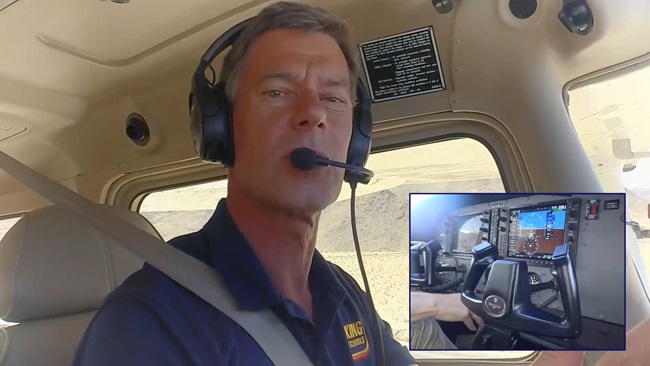
The following stories from the May 30, 2008, edition of AOPA ePilot were provided to AOPA members who expressed an interest in the particular subject areas. Any AOPA member can receive information tailored to their areas of interest by updating their preferences online.
My ePilot - Student Interest, Training Tips
RELATIVE WIND
It doesn't take long for a student pilot studying basic aerodynamics to come upon a term so fundamental to piloting that understanding it unlocks the door to understanding many advanced principles of flight. The term is relative wind.
The glossary of the Pilot's Handbook of Aeronautical Knowledge defines relative wind as "the direction of the airflow with respect to the wing. If a wing moves forward horizontally, the relative wind moves backward horizontally. Relative wind is parallel to and opposite the flightpath of the airplane."
Sounds simple enough, but there are nuances. To visualize relative wind, you must understand the flight path of the aircraft. "As students, pilots learn that relative wind occurs opposite the direction of flight. That is not to be confused with the direction the nose is pointing. The relative wind is often not directly off the nose," explains page 2 of the AOPA Air Safety Foundation's Safety Advisor Maneuvering Flight-Hazardous to your Health? [Relative wind can change rapidly during a turn, as explained in the May 23, 2008, "Training Tip."]
Note that the safety advisor's illustration demonstrates how relative wind is used to diagram the aircraft's angle of attack-the source of lift. "Wings are able to create lift by accelerating air over their top surfaces, which are curved expressly for that purpose. As the oncoming air-called the relative wind-strikes a wing's leading edge, it splits and travels aft until meeting again at the trailing edge. The airfoil's curve guarantees that the air flowing over the top surface travels faster than the air passing beneath the wing. It's this extra speed that creates a zone of low pressure air-suction, if you will-atop the wing," Thomas A. Horne wrote in "The four forces" on the AOPA Flight Training Web site.
Grasping relative wind is a simple step that will simplify your introduction to aerodynamics.
My ePilot - Training Product
KING SCHOOLS 'PRIVATE PILOT CHECKRIDE COURSE'
The private pilot checkride is a source of consternation for most students, no matter how many reassurances they get from CFIs, friends, and family. Fortunately, there are lots of checkride prep materials readily available. King Schools Private Pilot Checkride Course on DVD gives you a video instructor (John King) and an FAA examiner who fly a complete checkride and show you how to demonstrate your knowledge when the big day comes. The two-DVD set comes with a copy of the practical test standards, so you can follow along as each maneuver is performed. The course is $119 and can be ordered online or by calling 800/854-1001.
My ePilot - Student Interest, Final Exam
Question: What does my exhaust gas temperature gauge tell me?
Answer: Exhaust gas temperature (EGT) provides an accurate measure of your best power or best economy fuel/air mixture. As you lean the mixture, the temperature of the exhaust gases increases to a point-then begins to cool. Correct leaning provides the best fuel/air ratio optimizing your aircraft's range. Mixtures too rich lead to spark plug fouling, and mixtures too lean lead to detonation. To learn more about proper leaning, read the AOPA Air Safety Foundation's Fuel Awareness Safety Advisor.CORRECTION: In the May 23, 2008, Final Exam answer, we incorrectly stated the requirement for flying special VFR. Noninstrument-rated pilots can fly special VFR during the day if they meet the requirements stated in FAR 91.157. Only pilots who are instrument rated and flying an aircraft certified for flight in instrument conditions can fly special VFR at night. See AOPA Online for the complete corrected answer. We regret the error.
Got a question for our technical services staff? E-mail to [email protected] or call the Pilot Information Center, 800/872-2672. Don't forget the online archive of "Final Exam" questions and answers, searchable by keyword or topic.


